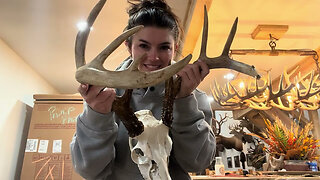Premium Only Content

Self-running and zero emission power plants from the /Rosch/ Hydro Power Plant 60 KW
kinetic power plants (KPPs). These self-running and zero emission power plants generate permanently usable electric energy without any fuels, wind power or solar energy. Rosch offers via distribution partners industrial size power plants with an electric output power of 200 kW as well as 5, 40, and 100 MW . Distribution partners are e.g. the global engineering, procurment, and construction company Ki-TECH for the KPP technology and the German company E-Cat Deutschland GmbH . An industrial size power plant at a publicly known and visitable customer site does not yet exist. However, potential industrial customers or potential licensees can visit and inspect an operating 100 kW and 500 kW power plant, on condition that they have provided a letter of intent and a proof of funds. The 100 kW and 500 kW power plants are located at a Rosch site in Thailand where they power that site and feed electricity into the grid. An inspection by an engineer team of the potential customer or potential licensee allows a verification of the genuineness of the power plant and rule out possible objections such as a hidden power source. Pictures on the left: Sketch of the buoyancy part of a kinetic power plant, the 100 kW demo plant in Thailand, and a former 60 kW pilot plant. The latter was several years available at a Rosch site in Germany and is meanwhile relocated to an undisclosed location. An often asked question is from where the generated energy comes from. The author of this report and website assumes that this novel energy technology is just one type of many possible types of systems which extract usable energy from an hitherto untapped and everywhere available energy form and source which is called space energy, vacuum energy, or ether energy / kinetic or buoyancy power plants which are self-running, i.e.they generate permanently usable electric energy without any fuels, wind power or solar energy. These zero-emission power plants consist of a control unit, an electric generator, an electrically-operated compressor which produces compressed air, a water column which contains a chain drive, fillable containers which are attached at the chain drive, and a valve system which can fill the containers with air. / A pilot plant was developed and is located at the research and development (R&D) laboratory of Rosch in Belgrade in Serbia. Several scientists who are working at the Rosch R&D lab have previously worked in military research projects. The pilot plant at the Rosch R&D lab requires an electric input power of 1,6 kW and generates an electric output power of 11,8 kW. / A self-running demonstration model with approximate dimensions 60 × 60 × 230 cm was presented at a congress about entirely novel energy technologies in Bregenz in Austria on 18 October 2014 [5]. The casing for the water column and the chain drive is made of acrylic glass. After a short initial supply of electric power from a battery the demonstration model started its self-running operation. The electric generator produced electricity not only for electrical loads but also for the electrically-operated system components such as the compressor and control unit. The demonstration model did generate an electric power of a few hundred watts for about two hours. The author of this report and website has viewed the self-running demonstration model at the congress in Bregenz. After about two hours operation the demonstration model was switched off and prepared for removal. / In April and May 2015 Rosch and the Austrian Association GAIA have presented a self-runniing and zero emission 5 kW pilot plant at a Rosch site nearby Cologne in Germany. Public viewing dates were available in the period from 25 April 2015 to 6 May 2015, Another public viewing event took place on 13 May 2015. On that day the 5 kW pilot plant was switched off and disassembled. A video from the disassembling is available in Ref. [6]. The author of this report and website has attended two events at the Rosch site nearby Cologne in Germany, namely on 1 and 13 May 2015. During these both visits the author of this report and website has seen that the Rosch site nearby Cologne in Germany comprises a reception, offices and large halls for the manufacture of prototypes and demonstration models.
-
 40:17
40:17
SLS - Street League Skateboarding
3 days agoEVERY 9 CLUB IN FLORIDA! Looking back at SLS Jacksonville 2021 & 2022 - Yuto, Jagger, Sora & more...
32.9K1 -
 2:00:47
2:00:47
PaddysParlorGames
14 hours agoSunday Parlor Chill: GOBSTEIN
832 -
 LIVE
LIVE
Major League Fishing
4 days agoLIVE! - Bass Pro Tour: Stage 2 - Day 4
822 watching -
 56:24
56:24
Russell Brand
1 day agoEddie Gallagher: War, Betrayal & Fighting the System
90.5K11 -
 11:21
11:21
TimcastIRL
6 hours agoGOP Rep Says TWO SHOOTERS In JFK Assassination As FBI Uncovers TROVE Of Secret Documents
94K142 -
 1:04:55
1:04:55
Bare Knuckle Fighting Championship
4 days agoBKFC ITALY PRESS CONFERENCE | LIVE!
37.3K5 -
 10:04
10:04
Space Ice
4 hours agoThe Movie Silent Hill Is Like Resident Evil Without The Good Parts - Worst Movie Ever
21.1K10 -
 5:49
5:49
Hannah Barron
1 day agoRedneck Euro Mount
18.3K20 -
 32:34
32:34
hickok45
9 hours agoSunday Shoot-a-Round # 268
13.9K12 -
 27:33
27:33
The Finance Hub
19 hours ago $10.43 earnedBREAKING: ALINA HABBA JUST DROPPED A MASSIVE BOMBSHELL!!!
48.5K97